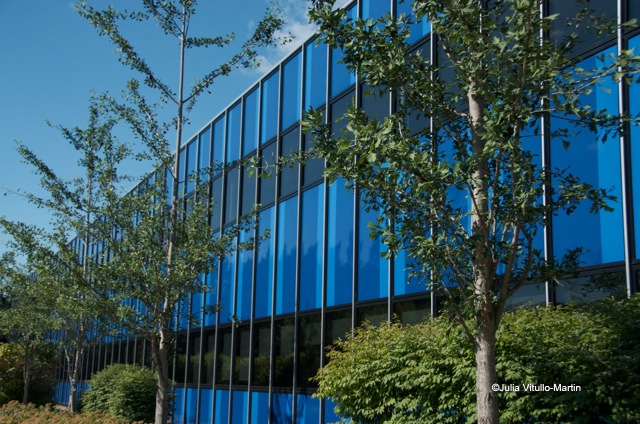Today the architectural world celebrates Eero Saarinen’s birthday. Born in Finland on August 20, 1910 (his architect dad Eliel was, amazingly, born on the same date in 1873), Eero Saarinen established himself as a giant, before dying young of a brain tumor on September 1, 1961. We live in Saarinen’s world—his elegant Tulip chair, never long out of fashion, was celebrated in the 1960s by the Star Trek television series, and more recently by Mad Men. His Gateway Arch (finished after his death by Charles Eames) remained a symbol of hope in St. Louis even in the city’s dark days of the 1980s. His Kresge Auditorium on MIT’s campus virtually proclaims post-war confidence and exuberance. His Miller House in Columbus, Indiana, is considered the epitome of mid-20th-century design. His Vivian Beaumont Theater at Lincoln Center (New York’s only Broadway-class theater outside the theater district) has freshly been revived with a series of hits, including War Horse and Ann. And dozens more.
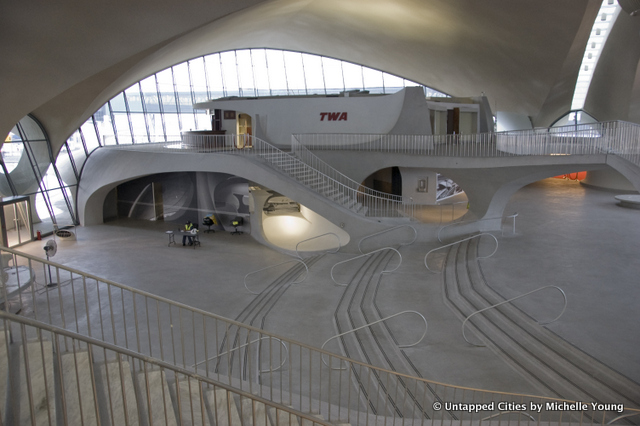
Yet despite his renown, the future of his distinctive buildings is not necessarily secure. His TWA Flight Center, for example, a gorgeous monument to the glory of flight, has been in near-constant danger for years. Many New Yorkers, thank heavens, have rallied to the cause. (When the New York Post recently reported that hotelier Andre Balazs was complaining that the Saarinen design didn’t fit his own design ethic, the New York Times’s Ginia Bellafante tweeted, “Dear Andre Balazs, the Saarinen TWA building is a lot cooler looking than any of your hotels.”)
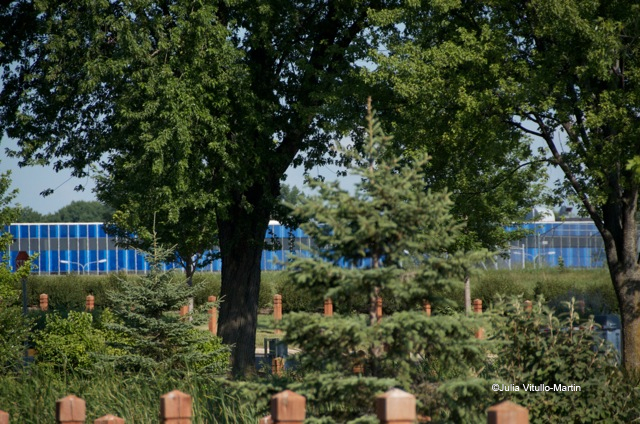
Modernism as a Cause
Another striking, though far less famous, Saarinen building facing an uncertain future is his IBM Manufacturing and Training Facility (dreadful name for a masterpiece) in Rochester, Minnesota. This is the ultimate example of modernism as a cause, says architectural critic and Saarinen biographer Jayne Merkel. The building reflects advanced technology, progress, and beauty all in the same space, demonstrating the corporation’s faith in the future. And, indeed, the Rochester plant is the site of IBM’s most recent world triumph—it’s where the Sequoia Blue Gene/Q supercomputer was designed, tested and built. In achieving the world’s top speed rating, the Sequoia ended Japan’s reign “atop a ranking that is considered crucial for scientific research and national defense,” wrote the Wall Street Journal. The Sequoia can carry out 16 quadrlllion calculations a second—or twice what second-rank Fujitsu can handle.
The Rochester plant was commissioned in 1956 by IBM CEO Thomas Watson Jr. He had just taken over from his father, Watson Sr., and wanted to use design and architecture to promote his own vision for IBM’s global leadership, says Museum of the City of New York curator Donald Albrecht, who oversaw the 2009 exhibit, “Eero Saarinen: Shaping the Future.” Watson specified a modernist building to symbolize IBM’s transformation from a national company headquartered in the East to a corporation undergoing exponential growth, with facilities and companies all over the world. The Rochester plant was IBM’s first building outside the East Coast—and also Saarinen’s first corporate campus (a concept he’s said to have invented). Merkel calls Rochester the first corporate mixed-use campus—it combined manufacturing, distribution, basic research, engineering and design.
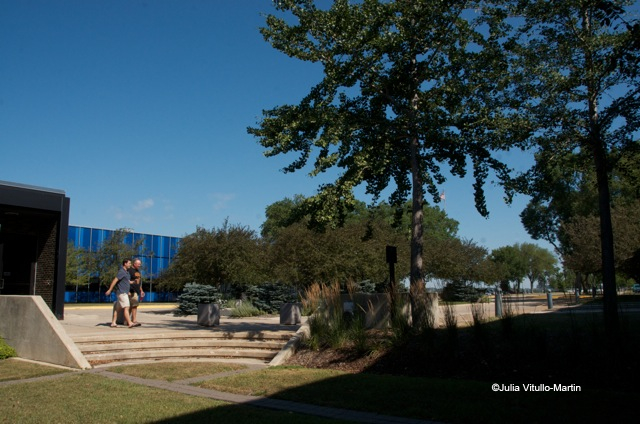
Watson required that Saarinen’s facility be designed for future expansion, be a good neighbor to the community, foster IBM’s own community of loyal employees, and visually express the character of the new IBM. Watson wanted the facility’s identity to be “both populist and aristocratic, contemporary and historic.” Quite an undertaking, but the facility has probably succeeded on all these counts. For one thing, IBM’s Rochester inventors have been awarded more than 2,700 U.S. patents for product innovation. The grouping of buildings around internal courtyards, for example, encourages friendships and collaborations, even as the overall campus looks aloof and slightly intimidating from afar.
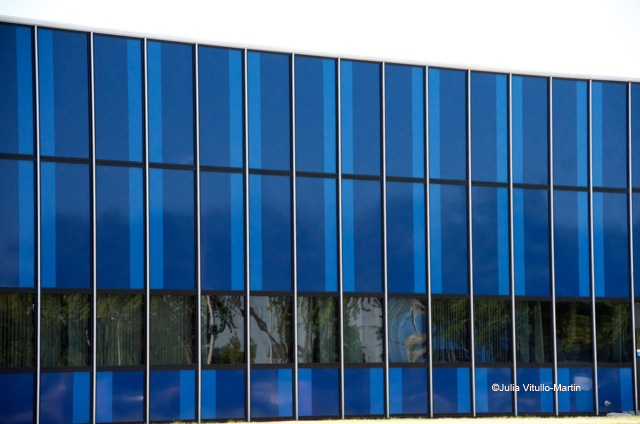
Saarinen believed deeply in new technologies and experimented with several in Rochester, the most obvious being the vibrantly blue glass membrane that was also the world’s thinnest exterior wall at the time. (While many critics thought the blue vulgar, Saarinen said it was inspired by Minnesota’s spectacular blue sky. Of course, blue was also IBM’s official color.) Merkel makes another point about the color: Saarinen wanted the building to look good through all four of Minnesota’s brutal seasons. Blue looks good against the green grass of summer as well as the snow of winter.
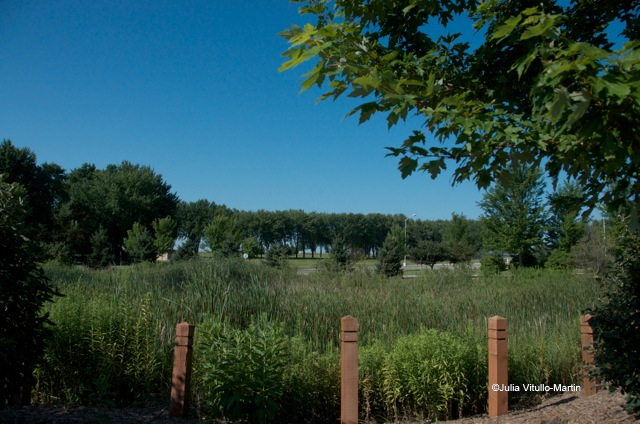
His landscape architect was, as usual, the renowned Dan Kiley. In the last decade IBM has planted lovely native grasses that surely were not part of the original vision. Says Merkel, “We don’t think of modernism as being timeless, but the Rochester facility is—and is therefore able to accommodate new design elements, like native grasses. Of course, it helps that they are often geometric.”
A Masterpiece in Jeopardy
Merkel, who says Rochester is far more beautiful than Bell Labs, which it resembles, calls it the Saarinen masterpiece no one sees. The beauty is astonishing given that the facility is huge—some 3.6 million square feet or the equivalence of roughly 78 football fields. It is and always has been the largest IBM facility in the world under one contiguous roof. But that may not be true much longer. The local newspaper, the Rochester Post-Bulletin, has been carrying a series of articles on IBM’s moving its manufacturing jobs to Mexico (and a few to New York) while refusing to comment to the press.
Julia Vitullo-Martin is a senior fellow at Regional Plan Association. Get in touch with her @JuliaManhattan.






